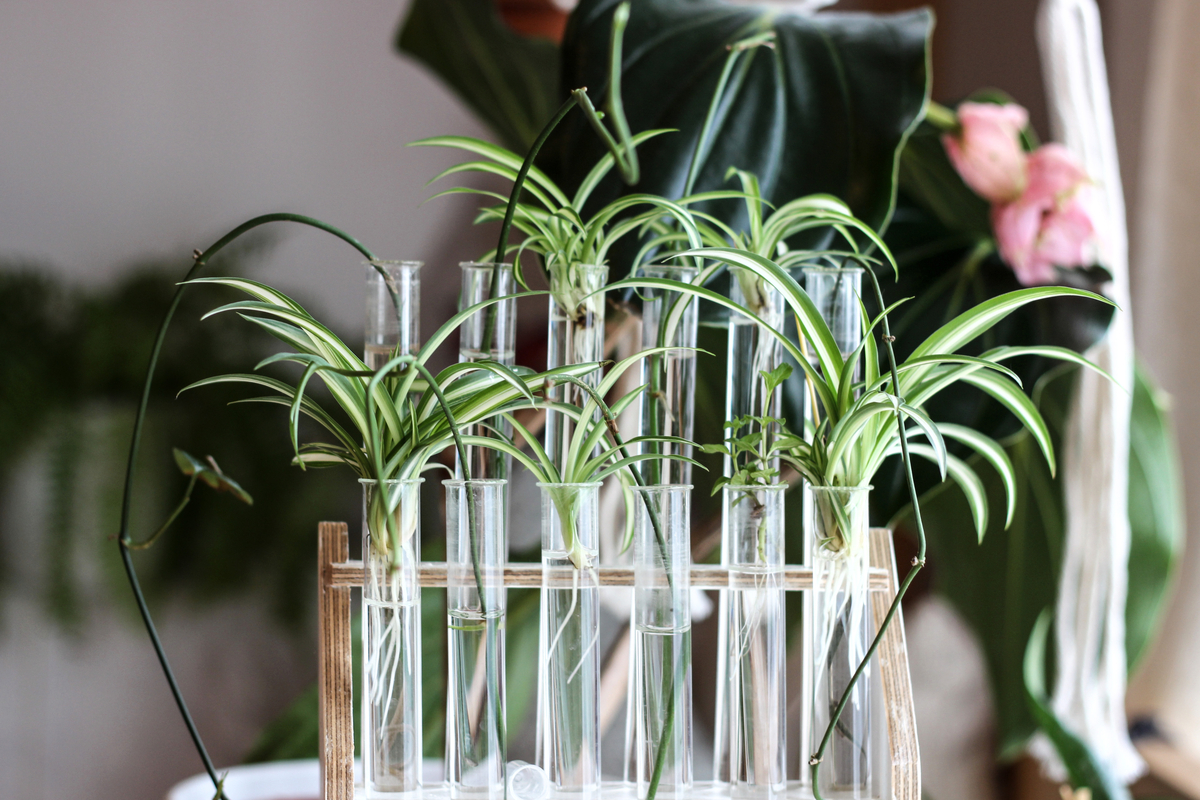Gardening can be fun and relaxing, but it can also be a bit messy. If you aren’t fond of dirt and would rather keep your house and your hands clean, then starting a hydroponic garden might be the right choice for you. Hydroponic gardening can sound intimidating, but really all it means is growing plants in water rather than soil.
While you might immediately think of water lilies and lotuses, those plants do actually grow roots in the soil at the bottom of ponds! Hydroponic gardening means there’s no soil at all. Not all plants are suited for it, but here are five plants that grow in water for you to consider starting with.
Orchids

Orchids are beautiful tropical plants, and they actually grow quite well in water. This is because some orchids, known as epiphytic orchids, naturally grow without soil. In the wild, this often takes the form of growing on trees, but in your home, they can grow in water instead.
Moth orchids, one of the most popular types of orchids to grow, are well suited to this growing method. Be sure to choose a container that can hold the orchid upright and only cover the roots with water. Leaves that are submerged can rot and turn the water foul. Replace the water once a month, clean the container when you do, and let the roots dry before putting it back in the water.
Lucky bamboo

Lucky bamboo is actually a species of dracaena, and it grows surprisingly well in water. Lucky bamboo resembles bamboo but grows much more slowly, making it a better indoor plant than true bamboo. When growing it in water, add some aquarium rocks or glass pebbles to the bottom, to help weigh the roots down and keep the plant upright.
Additionally, it’s a good idea to use distilled or bottled water instead of tap water. Lucky bamboo can be sensitive to certain chemicals and minerals that are commonly found in tap water. While a little bit won’t hurt it, it can be easily overwhelmed when the roots are submerged in the water.
Spider plants

Spider plants are easy to grow in general, and growing them in water is no different. Transferring your mature spider plant from soil to water can be tricky, so the best way to start is with a baby spider plant. These mini spider plants grow from mature spider plants, and once they’re separated from the parent plant, they can be planted in soil or water.
Since these plantlets are so small, be sure to start with a shallow container. The leaves should stay above the water, and you’ll need to replace the water every few weeks. Over time, you can move it into larger containers as it grows into a mature spider plant.
Philodendron

Philodendron is a popular houseplant known for being easy to grow and coming in a number of fantastic varieties. From varieties with cute heart-shaped leaves to those with bright pink leaves, philodendron is a great starter plant for beginners. If you want to grow it in water, it’s best to start with a cutting.
Use a pair of sharp, clean scissors, shears, or a knife and cut at an angle just below a leaf node. Never take more than one-third of the plant, as taking too much stresses plants out. Then, simply place your cutting in clean water and put it on a sunny windowsill. Replace the water every month or whenever it gets low or dirty, and soon you’ll see roots growing. When the roots are an inch long and thicker than the tip of a pencil, you can transplant it into soil if you want.
Pothos

Pothos is a beautiful and hardy plant, and it’s a popular houseplant for beginners. It has developed a reputation for being difficult to kill, and it lives up to this reputation. Growing pothos in water is just like growing philodendrons in water. Start with a cutting, replace the water as needed, and before long, you’ll see roots.
Pothos may not have quite as many varieties as philodendron, but it is an incredibly robust plant. If you’re nervous about growing plants in water, pothos is an excellent plant to start with. It also grows quickly, so if one cutting doesn’t succeed, your pothos plant will be ready for you to take another cutting before long.
There are plenty of plants that grow in water, including some vegetables, but these five are among the best to start with. As long as you keep the water and containers clean and take care of the plant’s other needs, like sunlight and fertilizer, you’ll be able to grow plants in water without issue. Starting out can be tricky, so be patient and try again if the first time doesn’t work out.




